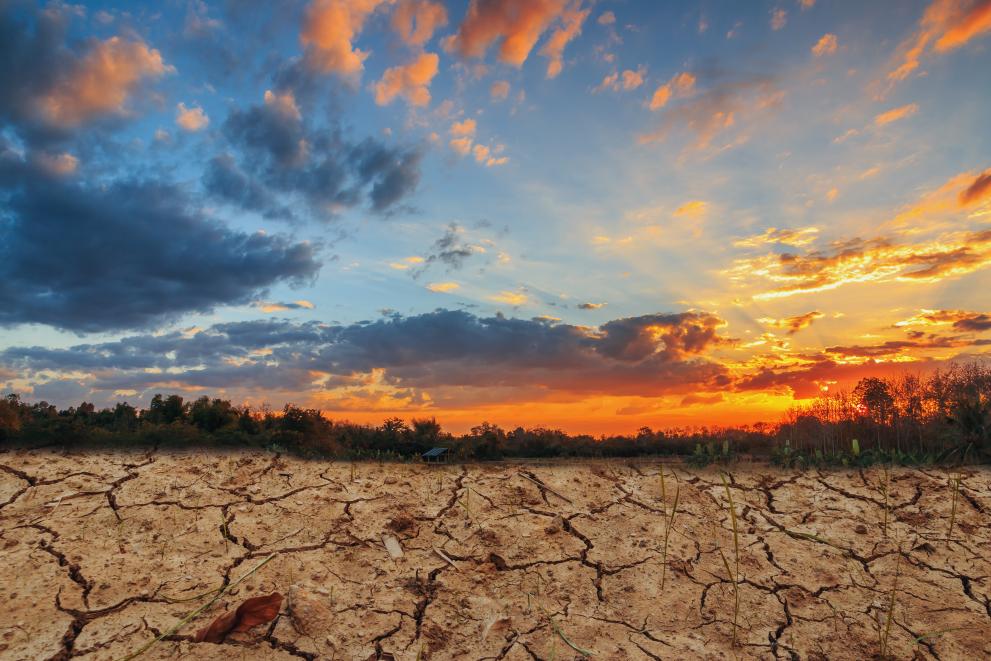
The complex network of interdependencies between plants and animals multiplies the species at risk of extinction due to environmental change, according to a JRC study.
In the case of global warming, predictions that fail to take into account this cascading effect might underestimate extinctions by up to 10 times.
As an obvious, direct consequence of climate change, plants and animals living in a given area are driven to extinction when the local environmental conditions become incompatible with their tolerance limits, just like fish in an aquarium with a broken thermostat.
However, there are many elusive drivers of species loss that go beyond the direct effects of environmental change (and human activity) which we still struggle to understand.
In particular, it is becoming clearer that co-extinctions (the disappearance of consumers following the depletion of their resources) could be a major culprit in the ongoing biodiversity crisis.
While the concept of co-extinction is supported by a sound and robust theoretical background, it is often overlooked in empirical research because it's extremely difficult to assess.
New JRC study on co-extinctions
A new study led by the JRC took on this challenge in order to determine the importance of co-extinctions in conditions of environmental change.
JRC scientist Giovanni Strona, in collaboration with Professor Corey Bradshaw from Flinders University in Adelaide, Australia, constructed 2000 "Virtual Earths", which they populated with thousands of plants and animals organized into a global system of inter-connected food-webs.
They then subjected the virtual Earths to extreme trajectories of environmental change, consisting in either a "global warming", i.e. a linear, monotonic increase in temperature, or a "nuclear winter", i.e. a progressive cooling, such as that which could follow multiple nuclear detonations or an asteroid impact.
They then tracked the loss of species diversity within two separate scenarios up to complete life annihilation.
In the first scenario, they only accounted for the extinction of a species when the temperature became too high or too low for that species to tolerate.
In the second scenario, starting from the extinctions triggered by the mismatch between local temperature and species tolerance limits, they also simulated co-extinction cascades.
By comparing the two scenarios, the scientists were able to provide a quantitative estimate of the relative importance of co-extinctions in planetary biodiversity loss.
They found that failing to account for interdependencies between species led to underestimation of the magnitude of mass extinctions triggered by climate change by up to 10 times.
Giovanni reflects that "conservationists and decision makers need to move fast beyond a species-specific approach, and look with increasing attention at species interaction networks as a fundamental conservation target. Whenever a species leaves our planet, we lose much more than a name on a list".
Global warming
IPCC Special Report on Global Warming of 1.5°C confirms the utmost urgency to act
The study also explored the worst possible scenario of temperature change due to global warming.
According to the simulations, 5-6°C of warming would be enough to wipe out most life on the virtual Earths the scientists created.
Giovanni recognises that “there are obvious limitations in our ambitious model, due to the multiple challenges of building realistic global ecological systems.
On the one hand, our results are consistent with real-world patterns for which we have empirical evidence.
This make us confident that the many assumptions we had to take in order to build a functional model are sound. On the other hand, however, it would be misleading to just focus on raw numbers."
What is clear is that a warming Earth will put increasing pressure on the planet's biodiversity, and co-extinctions will add to that impact.
While it is unlikely that the Earth will become 5-6°C warmer in the near future, it is quite likely that global temperatures will continue to increase.
Read the full Scientific Report in Nature: Co-extinctions annihilate planetary life during extreme environmental change
Related Content
The full Scientific Report in Nature: Co-extinctions annihilate planetary life during extreme environmental change
Details
- Publication date
- 28 November 2018
